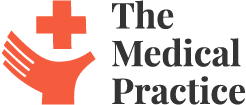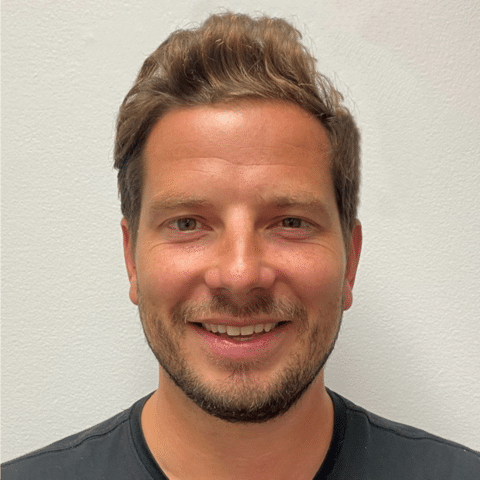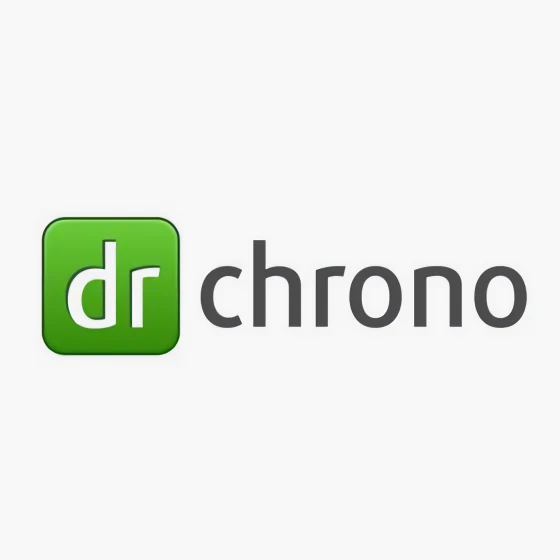10 Best Urology EMR Software Shortlist
Here's my pick of the 10 best software from the 18 tools reviewed.
Our one-on-one guidance will help you find the perfect fit.
Navigating the landscape of Urology EMR software can be complex. As a medical professional, you need tools that can handle sensitive patient charts, manage referrals, and ensure HIPAA compliance. Not to mention, the software should optimize your clinical workflow and integrate seamlessly with your existing systems.
Ultimately, the right Urology EMR software will lift some of the burden of administrative tasks. I'm here to guide you in choosing the best-fit solution for your practice.
What Is Urology EMR Software?
Urology EMR software, or Electronic Medical Records software, is a digital tool designed specifically for urologists and their healthcare teams. It aids in the management and streamlining of patient data, treatment plans, billing, scheduling, and much more. The software is used by urology practices to enhance the quality of patient care, facilitate efficient workflow, and optimize administrative tasks.
It not only allows medical professionals to access and share patient records securely, but it also integrates seamlessly with lab systems and imaging centers, allowing for smooth diagnostic procedures. Through features like customizable templates, intuitive interfaces, and robust reporting, urology EMR software significantly improves the operational efficiency of urology practices and patient outcomes.
Best Urology EMR Software Summary
| Tool | Best For | Trial Info | Price | ||
|---|---|---|---|---|---|
| 1 | Best for customizable urology workflows | Free demo available | Pricing upon request | Website | |
| 2 | Best for robust interoperability and health exchange | Not available | From $449/user/month | Website | |
| 3 | Best for seamless iPad and iPhone integration | Free demo available | From $199/user/month (billed annually) | Website | |
| 4 | Best for quick, easy, and intuitive use | Not available | Pricing upon request | Website | |
| 5 | Best for providing a robust set of financial solutions | Not available | From $429/user/month | Website | |
| 6 | Best for AI-driven template-free documentation | Not available | Pricing upon request | Website | |
| 7 | Best for urology-specific workflow optimization | Not available | From $429/user/month (billed annually) | Website | |
| 8 | Best for flexible deployment options to suit any practice | Not available | From $199/user/month | Website | |
| 9 | Best for specialized urologic data analysis and reporting | No | Pricing available upon request | Website | |
| 10 | Best for voice dictation and command utility | Not available | Pricing upon request | Website |
Best Urology EMR Software Reviews
Athenahealth offers a comprehensive cloud-based healthcare platform known as athenaOne, which integrates various software and services to enhance clinical effectiveness, patient experience, and financial performance for healthcare providers.
Why I Picked Athenahealth: I like its simplified documentation process, which includes best-practice templates, macros, and accelerators that significantly reduce the time clinicians spend on documentation. This is particularly beneficial in a urology setting where detailed patient histories and complex treatment plans are common. The software also offers specialty-specific workflows and mobile documentation capabilities, allowing urologists to access and update patient records on the go.
Standout Features & Integrations:
Key features include revenue cycle management, communication and care tools for patient engagement, an easy-to-read summary of patient records, a patient portal, automated reminders, telehealth capabilities, and mobile accessibility. Integrations include NextPatient, DocResponse, Yosi Health, Secondwave, Recovery Plus, TSI, VaxCare, Fullscript, QueueDr, and CallMyDoc.
Pros and cons
Pros:
- Cloud-based system for remote access
- Comprehensive patient engagement features
- Robust integrations with labs and pharmacies
Cons:
- Data migration can be time-consuming
- The platform might be complex for less tech-savvy users
eClinicalWorks is an industry-leading electronic health records software solution designed to streamline various operations in healthcare practices. It emphasizes robust interoperability, enabling different healthcare systems to work together for efficient information exchange, which is integral in today's interconnected healthcare landscape.
Why I Picked eClinicalWorks: I selected eClinicalWorks for its strong track record and exceptional interoperability features. In my assessment, the software's ability to interface effectively with multiple health systems sets it apart. This quality is crucial for seamless data transfer across diverse platforms, a characteristic that led me to label it as the best choice for robust interoperability and health exchange.
Standout Features & Integrations:
eClinicalWorks offers a plethora of features such as customizable templates, telehealth capabilities, and robust data analytics. It integrates well with numerous health systems, pharmacies, labs, and imaging centers, contributing to its interoperability focus.
Pros and cons
Pros:
- Robust data analytics
- Customizable templates for diverse needs
- Superior interoperability across multiple health systems
Cons:
- Additional costs for certain features and services
- The user interface might have a steep learning curve
- High pricing can be a barrier for smaller practices
drChrono is a urology EMR software designed with a focus on compatibility with Apple devices. This all-in-one EHR, practice management software, and medical billing platform offers a seamless user experience for iPad and iPhone users. drChrono shines due to its intuitive design and mobile-first approach.
Why I Picked drChrono: In my comparison of various urology EMR solutions, drChrono stood out for its exceptional mobile integration. With many healthcare professionals relying on mobile devices for instant access to information, drChrono’s strong iPad and iPhone compatibility offers a significant edge. I believe it's the best choice for seamless iPad and iPhone integration because it optimizes the mobile experience, delivering a user-friendly interface and robust capabilities right at the user’s fingertips.
Standout Features & Integrations:
drChrono offers real-time patient information, a built-in telehealth platform, and customizable clinical forms on its mobile platform. These features make it easy for healthcare professionals to work efficiently and effectively. Its integration with popular labs, pharmacies, and imaging centers, as well as with revenue cycle management services, ensure a smooth workflow.
Pros and cons
Pros:
- Integration with labs, pharmacies, and imaging centers
- Robust mobile capabilities
- Seamless iPad and iPhone integration
Cons:
- Less optimal for Android or other non-Apple users
- Learning curve for non-Apple users
- Pricing may be high for smaller practices
One Touch EMR is a cloud-based software solution specifically tailored to meet the needs of urology practices. It provides electronic health records, practice management, and telemedicine in a user-friendly package, making it a breeze for medical professionals to get up and running quickly. Its emphasis on simplicity and intuitiveness sets it apart.
Why I Picked One Touch EMR: I picked One Touch EMR for its sheer ease of use. In the crowded space of EMR solutions, the speed and ease with which users can adapt to One Touch EMR makes it a standout choice. Its emphasis on an intuitive user experience makes it the best pick for those who value quick and easy use of their EMR software, allowing practitioners to focus more on patient care and less on figuring out complex software.
Standout Features & Integrations:
One Touch EMR's intuitive dashboard, robust telemedicine features, and customizable templates make it a robust tool for urology practices. Integrations with top labs, pharmacies, and billing services ensure that it fits seamlessly into any existing medical workflow.
Pros and cons
Pros:
- Integration with top labs, pharmacies, and billing services
- Robust telemedicine features
- Intuitive user interface
Cons:
- Smaller user community compared to some other solutions
- Limited customization options
- No advanced data analytics
NextGen Healthcare is a leading provider of healthcare technology solutions, aimed at optimizing patient care and management. It sets itself apart by offering robust financial solutions, making it an excellent tool for practices aiming to enhance their financial management capabilities.
Why I Picked NextGen Healthcare: I selected NextGen Healthcare for this list due to its comprehensive financial solutions that range from revenue cycle management to advanced analytics. The commitment to bolstering the financial operations of a healthcare practice led me to label it as 'Best for providing a robust set of financial solutions.'
Standout features & integrations:
NextGen Healthcare shines with features like an intuitive patient portal, telehealth capabilities, and advanced analytics. It also integrates seamlessly with a wide range of laboratory, pharmacy, and radiology systems, enhancing its usability across different practice settings.
Pros and cons
Pros:
- Rich suite of features improving practice management
- Wide range of useful integrations with other systems
- Extensive set of financial solutions
Cons:
- Customizing the platform may require additional effort
- Could be complex to use for beginners
- Higher cost compared to other EHR systems
Praxis EMR is a pioneering electronic health record system that leverages artificial intelligence for a unique, template-free approach to documentation. This makes it an ideal fit for practices that want to leverage AI to create more personalized, detailed, and efficient documentation.
Why I Picked Praxis EMR: I chose Praxis EMR for this list because of its unique, AI-driven, template-free approach to documentation. This innovation in the healthcare documentation process makes it stand out, and why I consider it 'Best for AI-driven template-free documentation.'
Standout features & integrations:
Praxis EMR's AI learns from each encounter, creating a more efficient and personalized experience over time. The EHR system also offers a variety of integrations, including with billing and scheduling software, labs, and pharmacies, making it a versatile tool for any practice.
Pros and cons
Pros:
- Continual learning from each encounter improves the user experience over time
- Versatile integration capabilities
- AI-driven template-free documentation enhances efficiency and personalization
Cons:
- Annual billing might not suit all practices
- The AI-driven nature might require a learning curve for some users
- Pricing could be on the higher side for smaller practices
Urology-Cloud provides an EHR platform designed to cater specifically to the needs of urology practices. It brings in deep customization tailored for urological workflows, facilitating record keeping, billing, patient management, and practice analytics in an optimized manner. This specificity makes it particularly valuable for practices that seek workflow enhancements aligned with their field.
Why I Picked Urology-Cloud: In my search for tools, I was drawn to Urology-Cloud because it focuses on urology-specific processes. While many EMR software offerings have generalized functionalities, Urology-Cloud differentiates itself with features and workflows specific to urology, enhancing practice efficiency and patient medication management. This is why I consider it the best for urology-specific workflow optimization.
Standout Features & Integrations:
Urology-Cloud offers a variety of notable features, such as urology-specific templates, an integrated patient portal, and comprehensive practice analytics. It integrates smoothly with lab results, imaging centers, pharmacies, and other health systems to streamline the workflow in a urology practice.
Pros and cons
Pros:
- Good integration with other health systems
- Comprehensive practice analytics
- Features and workflows specific to urology
Cons:
- Interface may require time to learn
- Lack of a monthly billing option
- High cost, particularly for smaller practices
Greenway Health's Intergy is an Electronic Health Records (EHR) and Practice Management (PM) solution designed to streamline operations within a healthcare practice. Its selling point is the flexible deployment options it offers, making it suitable for a wide range of practices, regardless of their size or operational style.
Why I Picked Greenway Health's Intergy: I selected Intergy due to the adaptability it provides with various deployment choices. This aspect sets it apart from other EHR solutions. Given the diverse needs of healthcare practices, I deemed Intergy as the 'best for flexible deployment options,' as it can accommodate cloud-based, on-premise, or hybrid setups.
Standout features & integrations:
Intergy offers a suite of features, including patient portal access, appointment scheduling, and document management. Its interoperability with labs, pharmacies, and hospitals is commendable, further enhancing the breadth of its integrations.
Pros and cons
Pros:
- Comprehensive features for practice management and EHR
- Interoperability with labs, pharmacies, and hospitals
- Offers flexible deployment options (cloud-based, on-premise, hybrid)
Cons:
- Could take some time to understand and effectively use all the features offered
- User interface might seem complex for first-time users
- Higher initial cost compared to some other EHR tools
UroChart EHR is a medical software designed specifically for urology, providing specialized tools for data analysis and reporting in this field. It offers a suite of urology-focused features, making it an optimal choice for those needing specific support in the realm of urologic data analysis and reporting.
Why I Picked UroChart EHR: I chose UroChart EHR for this list as it stands out for its specialization in urology, offering features designed to meet the unique needs of urologists. This niche-focus and robust data analysis and reporting capabilities are why I consider it 'Best for specialized urologic data analysis and reporting'.
Standout features & integrations:
Key features of UroChart EHR include detailed urologic templates, intuitive data analysis tools, and comprehensive reporting capabilities. It integrates well with labs, radiology centers, and pharmacies, enhancing its utility for urology practices.
Pros and cons
Pros:
- Robust integration capabilities with labs, radiology centers, and pharmacies
- Detailed urologic templates and data analysis tools
- Specialized focus on urology improves its utility for urologists
Cons:
- Potential learning curve for those unfamiliar with specialized software
- Pricing information is not readily available
- Niche focus means it might not suit practices outside of urology
ChartLogic is an EHR solution designed to help healthcare providers streamline their operations and documentation. It stands out in the realm of voice recognition, specifically the voice dictation and command utility, making it an exceptional choice for practices where hands-free data input can optimize workflow.
Why I Picked ChartLogic: I picked ChartLogic for this list mainly due to its superior voice dictation and command utility, which is a distinguishing characteristic compared to other EHR tools. In my judgment, the ability to input data and control the system using voice commands makes it the 'best for voice dictation and command utility.'
Standout features & integrations:
ChartLogic boasts impressive features like electronic prescription, appointment scheduling, and billing. Furthermore, it integrates well with numerous billing and practice management systems, expanding its versatility in different practice settings.
Pros and cons
Pros:
- Comprehensive suite of EHR features
- Interoperability with various billing and practice management systems
- Excellent voice dictation and command utility
Cons:
- User interface may seem cluttered due to the wealth of features
- There could be a learning curve associated with mastering voice commands
- The cost might be higher compared to other EHR systems
Other Urology EMR Software Tools
Below is a list of additional Urology EMR Software that I shortlisted but did not make it to the top 10. Definitely worth checking them out.
- PronoCIS
For customizing templates to your practice needs
- Tebra
For seamless integration of clinical, billing and patient engagement
- Meditab
Good for intelligent automation and workflow customization
- UroChoice
Good for patient data management and real-time charting
- ModMed
Good for peer-reviewed and specialty-specific content
- McKesson Practice Partner
Good for comprehensive practice management
- AdvancedMD EHR
Good for seamless medical billing and telehealth capabilities
- CureMD
Good for cloud-based urology-specific functionality
More EMR Software Reviews
Selection Criteria
When choosing a urology-focused EHR software, I have personally tried and researched multiple tools to identify the most fitting ones. I have evaluated dozens of these tools and have been specifically on the lookout for user-friendly design, comprehensive data management, and specialized urological functionality.
Core Functionality:
- Ability to capture, store, and manage patient information efficiently
- Integrated practice management, including appointment scheduling and billing
- Detailed urology-specific documentation and data analysis
Key Features:
- Template-Free Documentation: Enables healthcare providers to create and customize notes without being confined to pre-set templates
- Integrated Telehealth: Given the ongoing shift towards remote healthcare, having built-in telehealth features allows for continuity of care even at a distance
- Robust Reporting: Especially for a specialty like urology, having the ability to create detailed reports and perform specialized data analysis is critical
- AI-driven Predictive Analysis: To support decision-making and improve patient outcomes by identifying patterns, risks, and opportunities in the patient data
Usability:
- Intuitive Interface: The software should have an easy-to-navigate dashboard that allows healthcare professionals to access relevant information with minimal clicks
- Role-Based Access: This is critical in a healthcare setting to maintain privacy and security. The tool should allow easy configuration of who can access what information
- Responsive Customer Support: Fast and effective customer support is key, particularly for healthcare providers who can't afford delays or disruptions in accessing patient data. This can be in the form of live chat, phone support, or a comprehensive knowledge base
- Smooth Onboarding Process: With the complex nature of EHR software, a smooth onboarding process, including training, tutorials, or a learning library is important to get the team up to speed quickly.
People Also Ask (FAQs)
What are the benefits of using urology-specific EMR software?
Urology EMR software offers several benefits to healthcare providers. Firstly, it provides specialized templates and workflows for urology, enhancing the efficiency of clinical documentation. Secondly, it allows integrated practice management, including scheduling, billing, and telehealth, all in one place. Thirdly, these tools often come with robust reporting and data analysis features specific to urology.
Fourthly, the use of AI-driven predictive analysis can help improve patient outcomes by identifying patterns and risks in patient data. Lastly, these tools facilitate better patient engagement with features like patient portals for easy access to their medical information.
How much do these urology EMR tools typically cost?
The pricing of urology EMR tools can vary widely depending on the features offered, the size of the practice, and the pricing model of the software provider. The costs can range from around $50 per user per month to upwards of $500 for more comprehensive solutions.
What are the typical pricing models for urology EMR software?
Most urology EMR software providers follow a subscription-based pricing model, which is typically billed monthly or annually. The cost often depends on the number of healthcare providers using the system. Some providers may also offer a pay-per-visit or a value-based pricing model.
Which are the cheapest and most expensive urology EMR software?
Among the options listed, UroChoice tends to be one of the more cost-effective options starting from around $100 per user per month. On the higher end, ModMed offers a robust suite of features and integrations but can cost upwards of $500 per user per month.
Are there any free urology EMR software options?
As of my last update, there were no completely free urology EMR software options. Most providers offer a free demo or a limited trial period, but for ongoing use, a paid plan is typically required. However, there are free EMR solutions available that are not specialized for urology, which may provide some of the required functionalities.
Summary
In conclusion, selecting the ideal Urology EMR software demands consideration of various factors, including core functionality, key features, usability, and pricing. Each tool possesses unique strengths, and your choice should align with your specific needs and requirements.
Key takeaways
- Core Functionality: A good Urology EMR software must support functions such as patient scheduling, medical billing, e-prescribing, and patient portals. A strong focus on urology-specific workflow is crucial.
- Key Features: Look for features that add value to your practice such as customizable templates, interoperability with other systems, advanced reporting, and comprehensive urological content.
- Usability and Support: An intuitive, user-friendly interface can greatly improve the efficiency of your practice. Additionally, look for strong customer support, seamless implementation process, and easy training modules.
Remember, it's about finding software that suits your practice's unique needs. The right Urology EMR software can drastically enhance the efficiency of your practice, improve patient care, and aid in your practice’s growth and profitability.
What Do You Think?
I hope this guide has been helpful in your search for the right Urology EMR software. I aimed to present the most valuable tools in the market based on our research and experience.
However, many solutions are out there, and I might have missed some worthy contenders. If you use or know of a Urology EMR tool that you think should be on this list, please don't hesitate to reach out and let me know. I appreciate your input and look forward to hearing your suggestions.

























